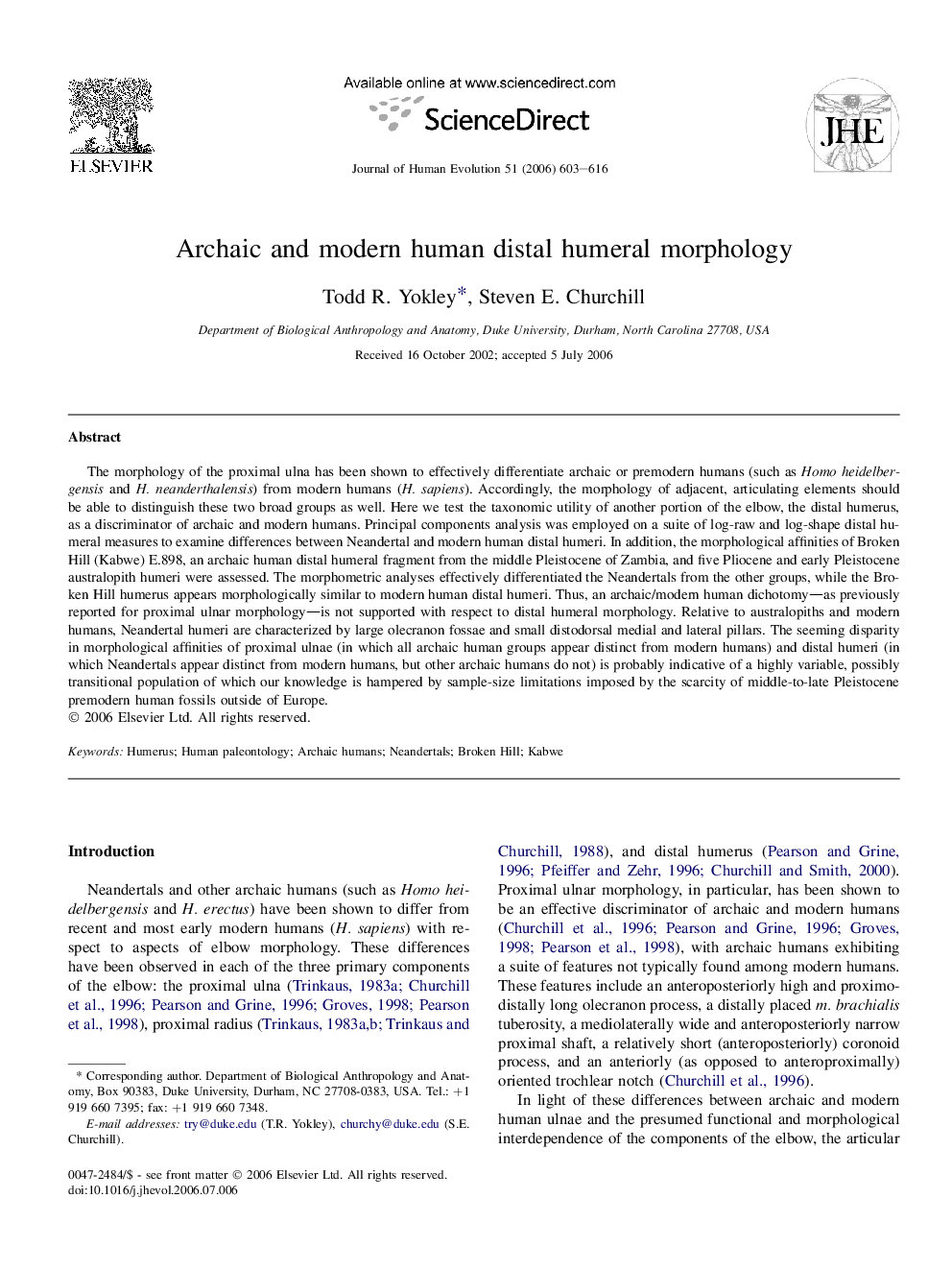| کد مقاله | کد نشریه | سال انتشار | مقاله انگلیسی | نسخه تمام متن |
|---|---|---|---|---|
| 4557351 | 1329548 | 2006 | 14 صفحه PDF | دانلود رایگان |

The morphology of the proximal ulna has been shown to effectively differentiate archaic or premodern humans (such as Homo heidelbergensis and H. neanderthalensis) from modern humans (H. sapiens). Accordingly, the morphology of adjacent, articulating elements should be able to distinguish these two broad groups as well. Here we test the taxonomic utility of another portion of the elbow, the distal humerus, as a discriminator of archaic and modern humans. Principal components analysis was employed on a suite of log-raw and log-shape distal humeral measures to examine differences between Neandertal and modern human distal humeri. In addition, the morphological affinities of Broken Hill (Kabwe) E.898, an archaic human distal humeral fragment from the middle Pleistocene of Zambia, and five Pliocene and early Pleistocene australopith humeri were assessed. The morphometric analyses effectively differentiated the Neandertals from the other groups, while the Broken Hill humerus appears morphologically similar to modern human distal humeri. Thus, an archaic/modern human dichotomy—as previously reported for proximal ulnar morphology—is not supported with respect to distal humeral morphology. Relative to australopiths and modern humans, Neandertal humeri are characterized by large olecranon fossae and small distodorsal medial and lateral pillars. The seeming disparity in morphological affinities of proximal ulnae (in which all archaic human groups appear distinct from modern humans) and distal humeri (in which Neandertals appear distinct from modern humans, but other archaic humans do not) is probably indicative of a highly variable, possibly transitional population of which our knowledge is hampered by sample-size limitations imposed by the scarcity of middle-to-late Pleistocene premodern human fossils outside of Europe.
Journal: Journal of Human Evolution - Volume 51, Issue 6, December 2006, Pages 603–616